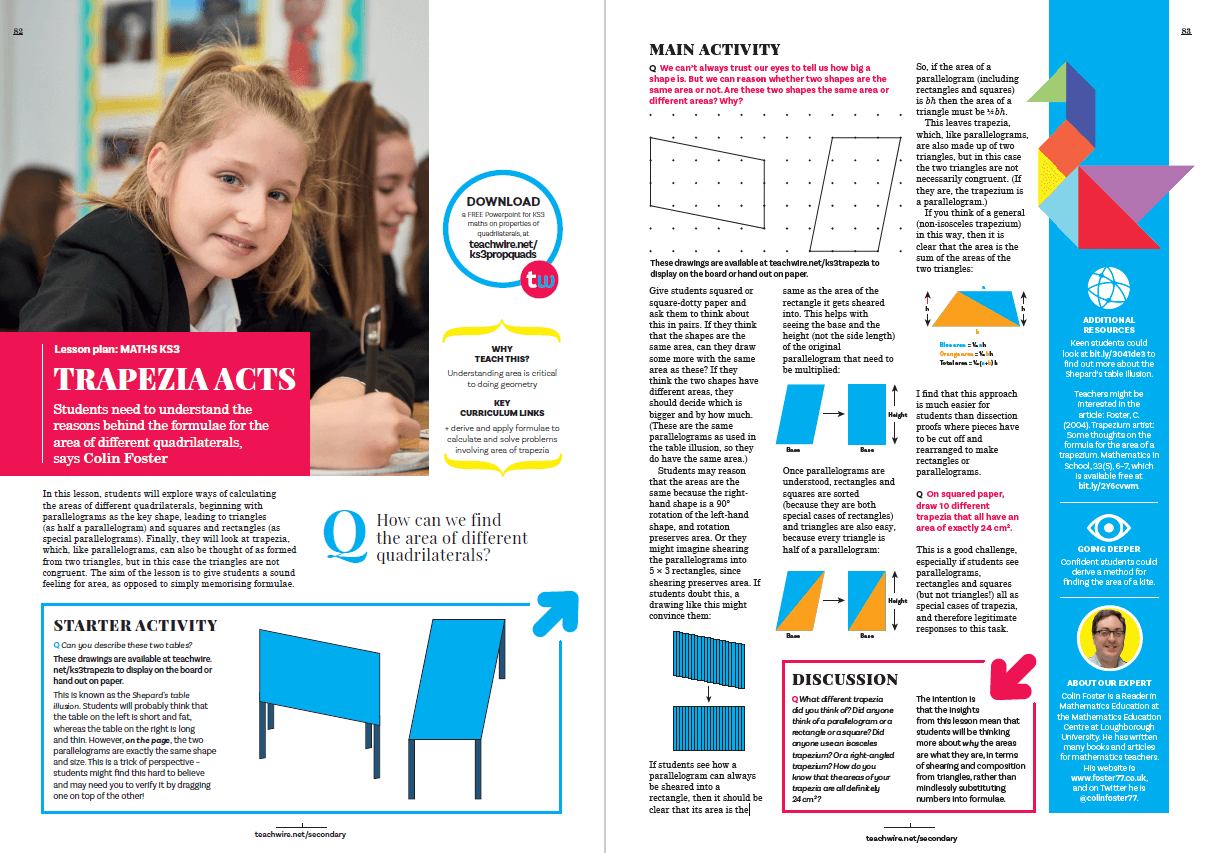Students need to understand the reasons behind the formulae for the area of different quadrilaterals, says Colin Foster…
In this lesson, students will explore ways of calculating the areas of different quadrilaterals, beginning with parallelograms as the key shape, leading to triangles (as half a parallelogram) and squares and rectangles (as special parallelograms).
Finally, they will look at trapezia, which, like parallelograms, can also be thought of as formed from two triangles, but in this case the triangles are not congruent.
The aim of the lesson is to give students a sound feeling for area, as opposed to simply memorising formulae.
This download includes the full lesson plan and accompanying resources.
Why teach this?
Understanding area is critical to doing geometry
Key curriculum links
Derive and apply formulae to calculate and solve problems involving area of trapezia














